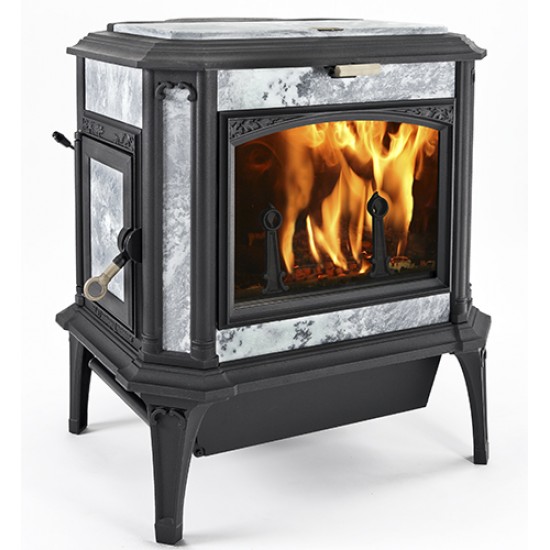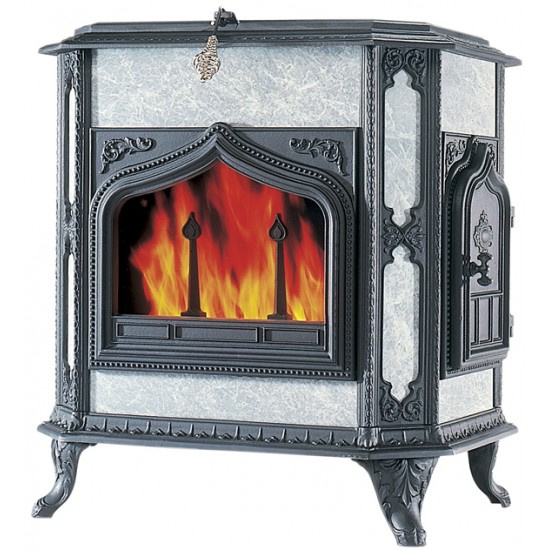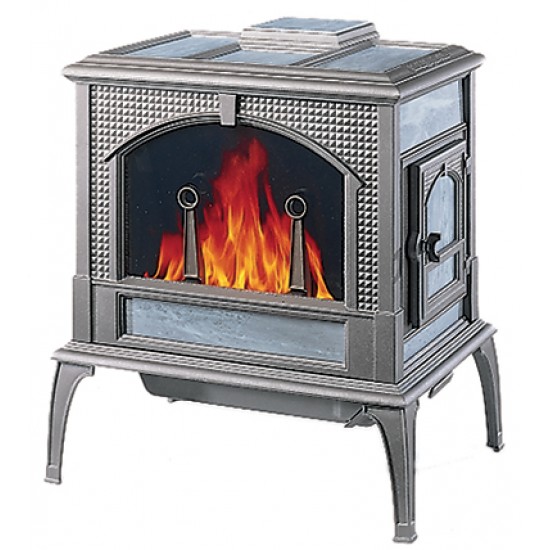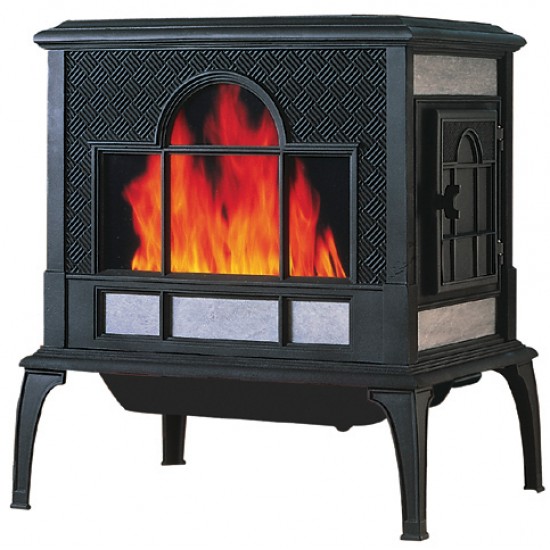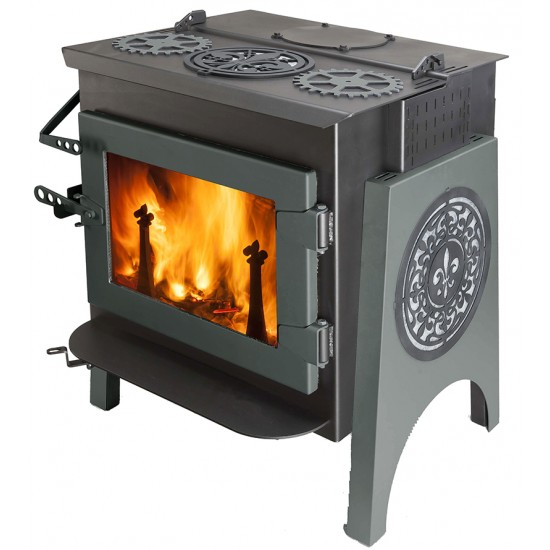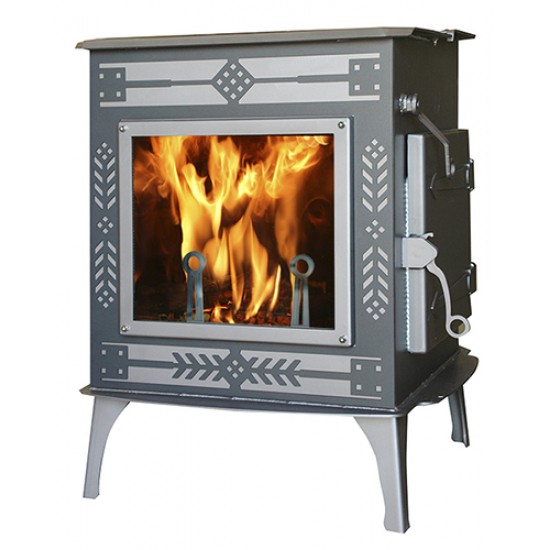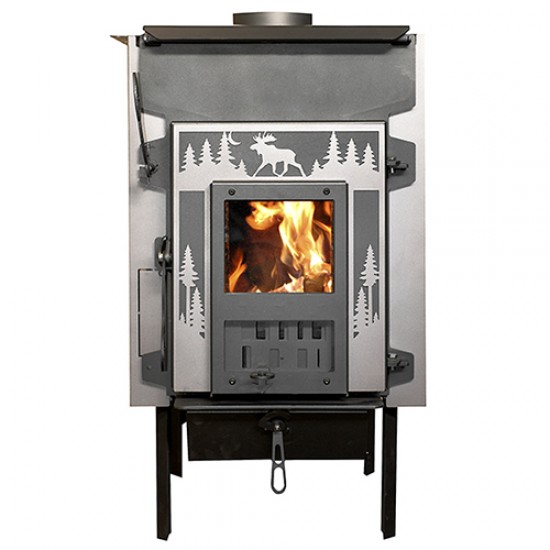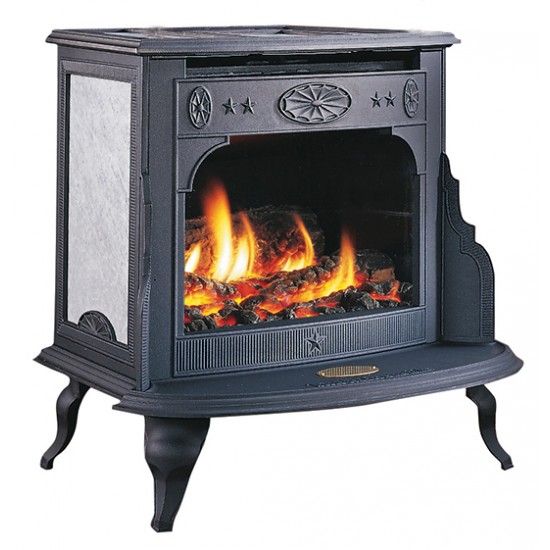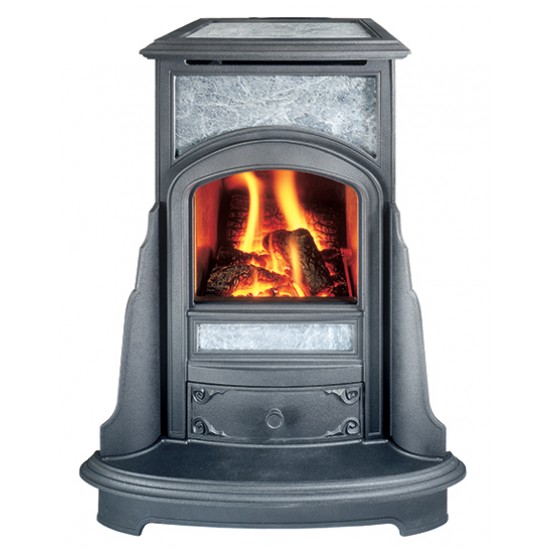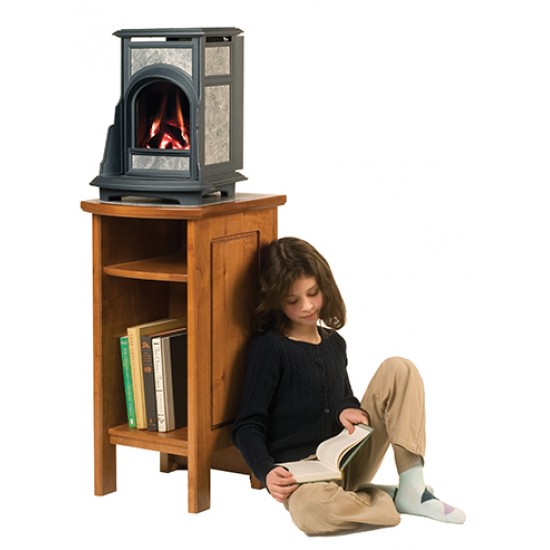
The Steal Hybrid has a firebox design with both a catalytic combustor and secondary combustion. We’ve been testing it all winter, and are pleased with both efficiency and emissions results (more on that later). The test units don’t look like much, but we have been more interested in performance than looks.
Preliminary EPA testing at an independent laboratory yielded very good results. Final test results should be available before the Alliance for Green Heat Decathalon in November.
The Steal Hybrid has a secondary combustion chamber that slopes up,
from the back of the stove toward the front, with outlets easily visible from the front viewing window. The display of secondary combustion is always visible, and there is an almost infinite variety of secondary pyrotechnics in the top of the firebox depending on the burn rate, amount of fuel, and damper settings. Active secondary combustion is an important part of both the enjoyment and understanding of burning wood. Secondary combustion is mesmerizing and it also cues the operator/owner to understanding the amount of combustible material in wood smoke that would have otherwise gone up the chimney, resulting in increased pollution and decreased efficiency.
The catalytic combustor points at the top and front of the stove (as opposed to the flue exit), where a customer gets the most benefit from the heat it produces. Imagine that the heat emanating from the combustor spreads at about a 30 degree angle (like a flashlight beam). We capture as much of that heat as we can in the stove top and the stove body, rather than having it go up the chimney.
The firebox is large (approximately 3.2 cubic feet), and easy to load through the large front door. It is lined with 1.125” thick soapstone on the side walls, and firebrick on the bottom. The center section of the base has an ash grate if an optional ash pan is ordered with the stove.
We Welcome your Comments and would appreciate your Name and Town when you comment.

